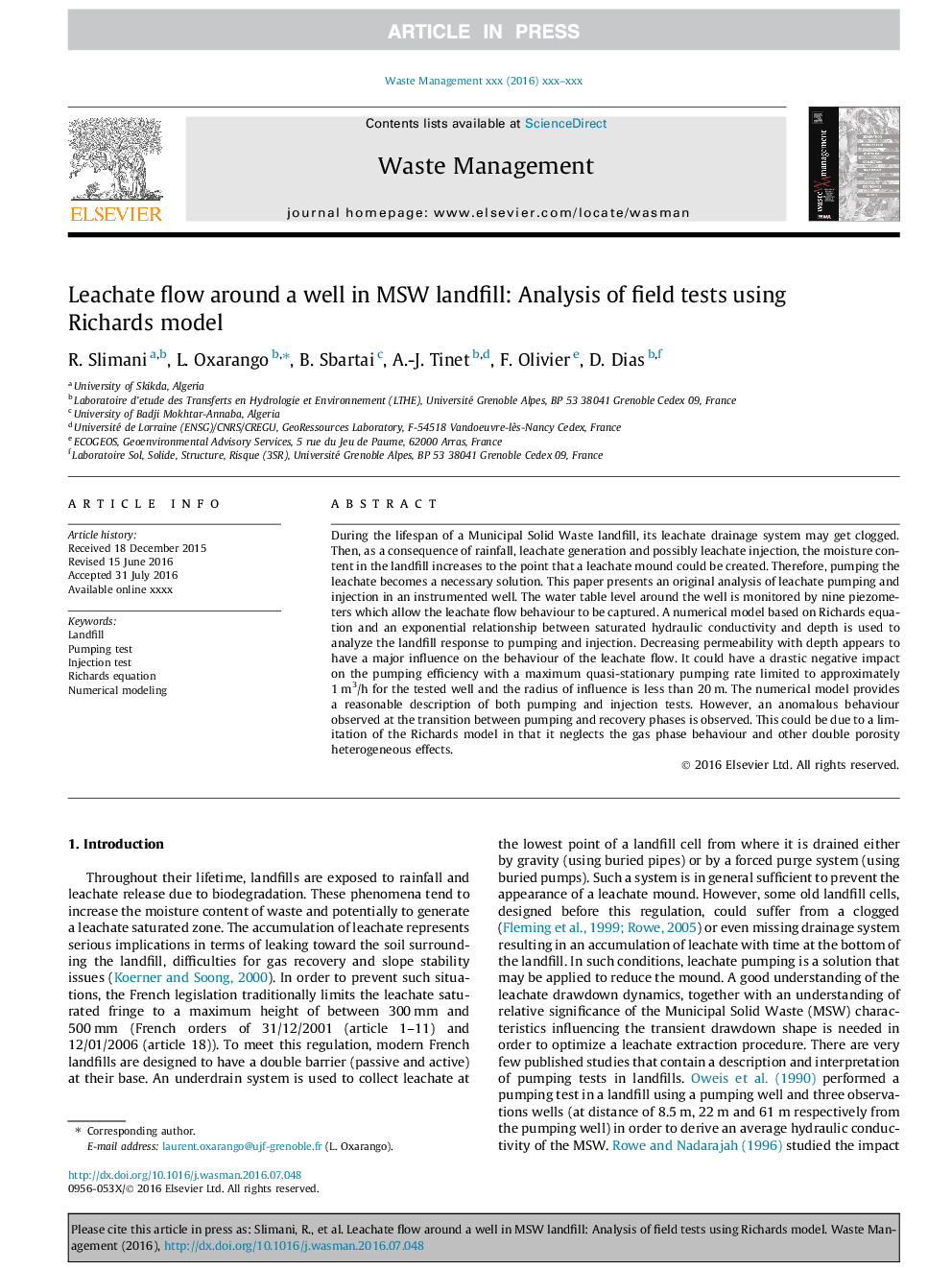| Article ID | Journal | Published Year | Pages | File Type |
|---|---|---|---|---|
| 5756858 | Waste Management | 2017 | 9 Pages |
Abstract
During the lifespan of a Municipal Solid Waste landfill, its leachate drainage system may get clogged. Then, as a consequence of rainfall, leachate generation and possibly leachate injection, the moisture content in the landfill increases to the point that a leachate mound could be created. Therefore, pumping the leachate becomes a necessary solution. This paper presents an original analysis of leachate pumping and injection in an instrumented well. The water table level around the well is monitored by nine piezometers which allow the leachate flow behaviour to be captured. A numerical model based on Richards equation and an exponential relationship between saturated hydraulic conductivity and depth is used to analyze the landfill response to pumping and injection. Decreasing permeability with depth appears to have a major influence on the behaviour of the leachate flow. It could have a drastic negative impact on the pumping efficiency with a maximum quasi-stationary pumping rate limited to approximately 1Â m3/h for the tested well and the radius of influence is less than 20Â m. The numerical model provides a reasonable description of both pumping and injection tests. However, an anomalous behaviour observed at the transition between pumping and recovery phases is observed. This could be due to a limitation of the Richards model in that it neglects the gas phase behaviour and other double porosity heterogeneous effects.
Related Topics
Physical Sciences and Engineering
Earth and Planetary Sciences
Geotechnical Engineering and Engineering Geology
Authors
R. Slimani, L. Oxarango, B. Sbartai, A.-J. Tinet, F. Olivier, D. Dias,
